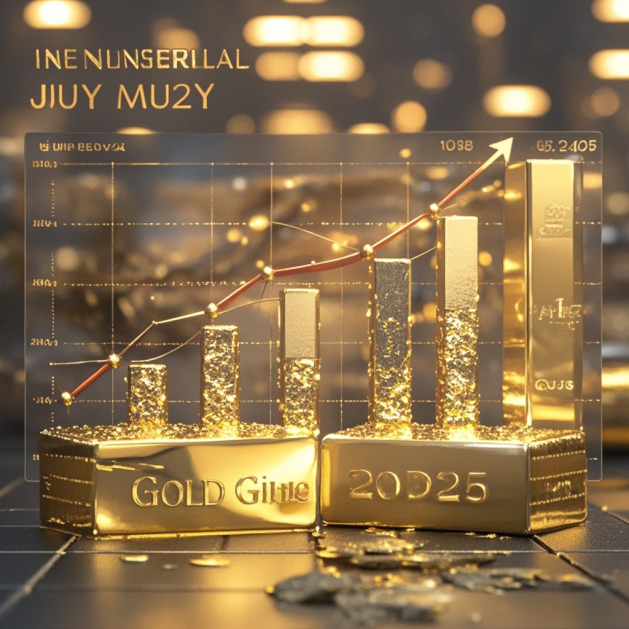International Gold Price Surges Significantly on July 14, 2025, Reaching New High
At 8:53 AM on July 14, 2025, the international gold futures price on the New York Mercantile Exchange exhibited a strong upward trend, with the real-time price reaching $3,385.34 per ounce—an increase of $21.34 (0.634%) from the previous day's closing price. The opening price for the day was $3,376.50, with the highest price touching $3,389.30 and the lowest at $3,376. This price movement has drawn widespread attention from market participants, signaling significant dynamics currently unfolding in the gold market.
From a broader market perspective, global economic uncertainty has been a key driver supporting the upward trajectory of gold prices. Despite various measures taken by countries to foster economic recovery, geopolitical tensions and recurring inflationary pressures in certain regions have sustained strong demand for asset preservation. As a traditional safe-haven asset, gold has naturally become a preferred choice for many investors.
During the day's trading session, gold prices rose rapidly after the market opened, reflecting strong bullish momentum. In the early trading hours, active market participation and substantial buying pressure pushed the price above the previous day's closing level, with further upward testing. The peak of $3,389.30 indicated that market optimism toward gold had reached a new short-term high. Although prices later retreated slightly, they remained at elevated levels, demonstrating strong market confidence in the current valuation.
The surge in gold prices has had far-reaching implications across multiple sectors. First, for gold mining companies, this is undoubtedly a major positive development. Higher gold prices translate to expanded profit margins, incentivizing miners to ramp up production efforts and increase output. Additionally, elevated prices have revived the economic feasibility of previously shelved gold mining projects due to cost constraints, potentially spurring investment growth across related supply chains.
Second, in the investment sphere, rising gold prices have attracted greater capital inflows. Both institutional and retail investors have adjusted their asset allocations, increasing gold's weight in their portfolios. This influx of funds not only further propels gold prices upward but also creates spillover effects in other financial markets. For instance, some capital shifting from equities to gold may exert short-term adjustment pressures on stock markets.
Third, for consumers, higher gold prices directly impact jewelry sales. On one hand, rising costs have led to significant increases in retail prices, potentially dampening demand among some buyers. On the other hand, some consumers may purchase gold jewelry as an investment, anticipating further price appreciation. This shift in consumer behavior underscores gold's growing role as an investment vehicle in the public's perception.
Looking ahead, the gold market remains subject to uncertainties. While current economic and geopolitical factors provide support, the pace of global economic recovery and adjustments in monetary policies worldwide could significantly influence gold prices. If economic recovery accelerates, improving risk appetite may reduce safe-haven demand, leading to a price correction. Conversely, heightened economic uncertainty could sustain gold's upward momentum.
The notable rise in New York gold futures on July 14, 2025, reflects the interplay of multiple market forces. This price movement not only highlights the current vibrancy of the gold market but also exerts broad impacts on related industries and investment sectors. Market participants must closely monitor shifts in global economic and political conditions to make well-informed investment and operational decisions.
